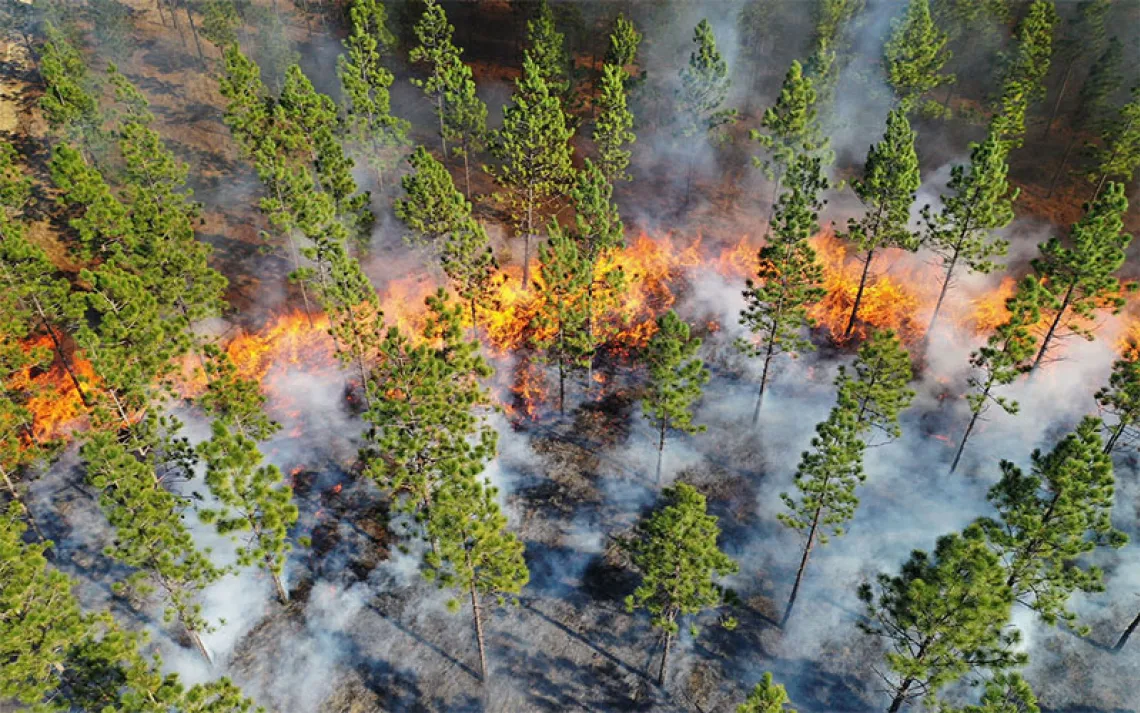Vermont Sets Ambitious Goal to Save Half of the State for Nature
New biodiversity measure aims to conserve 50 percent by 2050

Vermont mountains at Sunrise. | Photo by KenCanning/iStock
When American ecologist E. O. Wilson first proposed saving half the planet for conservation, some viewed it as a pie-in-the-sky ambition with little hope of coming to fruition. Now that idea, also called “Half-Earth,” is catching on, albeit on a small scale. Last month, when Vermont became the fifth state to pass a measure to protect 30 percent of the state by 2030, lawmakers also added a target to conserve 50 percent of the state’s forests and biodiverse working lands by 2050. It's the first state in the United States to pass such a law and, by most accounts, the first government in the world to do so.
"I'm very familiar with E.O. Wilson's Half-Earth, and it just seemed like Vermont was really well situated to move forward in a meaningful way with the goal of 30 by 30 and 50 by 50," said Vermont state representative Amy Sheldon, who was the lead sponsor for the bill. "For me, it's such a perfect place for us to go ahead with this."
This is not a top-down approach by leaders in Montpelier telling state residents what to do. Rather, the law is meant to encourage locally led efforts, in partnership with state, county, and citizen groups, to protect existing wildlands and agricultural landscapes. To accomplish this, leaders are using a framework, created by the Vermont Agency of Natural Resources (ANR), called Vermont Conservation Design. The guide lays out natural features such as mature forests, grasslands, and wetlands that need to be protected. These areas sustain ecosystems and soils, support clean air and water, and protect wildlife populations. While not a regulatory document, the guide uses GIS mapping to show where intact natural areas remain. It also highlights which areas are most likely to boost wildlife connectivity, a key step to protecting animals as habitat loss and climate change threaten to disrupt migration patterns. This allows leaders to protect not only forested areas but also farms, homesteads, and other lightly developed areas.
Already, a suite of tools, such as conservation easements and buying land outright, exist to help landowners, conservation groups, and state leaders reach their targets. But to achieve the 50 percent goal by 2050, the state needs to be a bit more flexible, says Trey Martin, the director of Conservation and Rural Community Development at the Vermont Housing and Conservation Board (VHCB), which is overseeing the rollout of the new law. That could mean using regulatory measures such as permitting and zoning to discourage development in some areas or setting time constraints in others, both of which would allow more acres to be conserved in the long term.
“We think that the more tools and options that we can bring to the table, the more effective we will be working with landowners across the state to achieve a connected, functioning, resilient working and natural landscape in Vermont,” Martin said. “We have a long way to go to protect the landscape so that the human experience, the built environment, and natural environment can be maintained in something more like equilibrium.”
The Vermont legislature passed an initial version of the conservation bill last year, but it was vetoed by the Republican governor over funding concerns. This year, the bill (H.126) passed with modifications and became law, notably without the governor’s signature but also without his opposition. The need for such a statute has long been apparent to a majority of the state's leaders, who have seen an increasing amount of forestland developed in recent years. In 2021, Standing Trees, a Montpelier, VT-based nonprofit, which works to protect and restore public lands in New England, lobbied leaders to adopt a conservation goal in the state's Climate Action Plan. When the plan was approved, the group worked with representative Sheldon to translate that commitment into legislation. "In the face of this summer's historic flooding in Vermont, the value of H.126 has become that much more apparent," Zack Porter, the executive director of Standing Trees, said. "We must do a better job protecting and restoring healthy ecosystems to overcome the climate and extinction crises."
Over two-thirds of Vermont is forested, but an estimated 12,000 acres are lost each year to development, according to the US Forest Service. The VHCB is in the process of creating a stakeholder group tasked with compiling a list of current and potential regulations that would allow the state to reach its conservation targets.
"I think there are a lot of groups that will be poised to help accomplish the goals," said Jamey Fidel, the forest and wildlife program director at the Vermont Natural Resources Council, a nonprofit group that provided testimony in support of the bill. "A big focus will be looking at inventory, the amount of land that's been conserved through conservation easements, where landowners have removed the development rights on their property."
As part of the process, the VHCB and the ANR will identify qualifying lands, including ecological reserves that would restore and maintain old-growth forests and working lands that support biodiversity. Once those lands are inventoried, the VHCB and ANR will develop a plan to move forward. Likely measures include looking at the role of state-owned land in promoting biodiversity and incentivizing private landowners, via tools like tax credits, to work with land trusts to conserve land in perpetuity.
Starting this month, the state plans to initiate the first of 12 meetings to solicit public comments and feedback. Once assembled, the group will include 10 to 15 individuals, who will then be charged with developing a plan by the end of 2025. While the law included a starter round of funding from Vermont’s general fund to help with staffing, state officials hope to raise additional funds, which will be needed to pay for land acquisitions that could cost tens of millions of dollars.
Several federal programs currently help states and landowners do this. One of the biggest is the Biden administration’s America the Beautiful campaign, which outlines a goal of protecting 30 percent of the country by 2030 using a volunteer-led conservation model. While at least 12 percent of the US is already protected for nature, it will be impossible to advance that goal without working landscapes and private lands. The federal program is providing much-needed funding to those who would like to participate, and the new state law demonstrates that Vermont is serious about its conservation goals.
“The great thing about having a strategic plan to accomplish the goals of the statute is that we look like a place to fund,” Martin said. “So, whether it's the Forest Legacy Program, or the Land and Water Conservation Fund, or Natural Resources Conservation Service, or America the Beautiful, we want [federal agencies] looking at Vermont and saying ‘Vermont's got its act together with respect to biodiversity, conservation, and climate resilience.’”
 The Magazine of The Sierra Club
The Magazine of The Sierra Club



